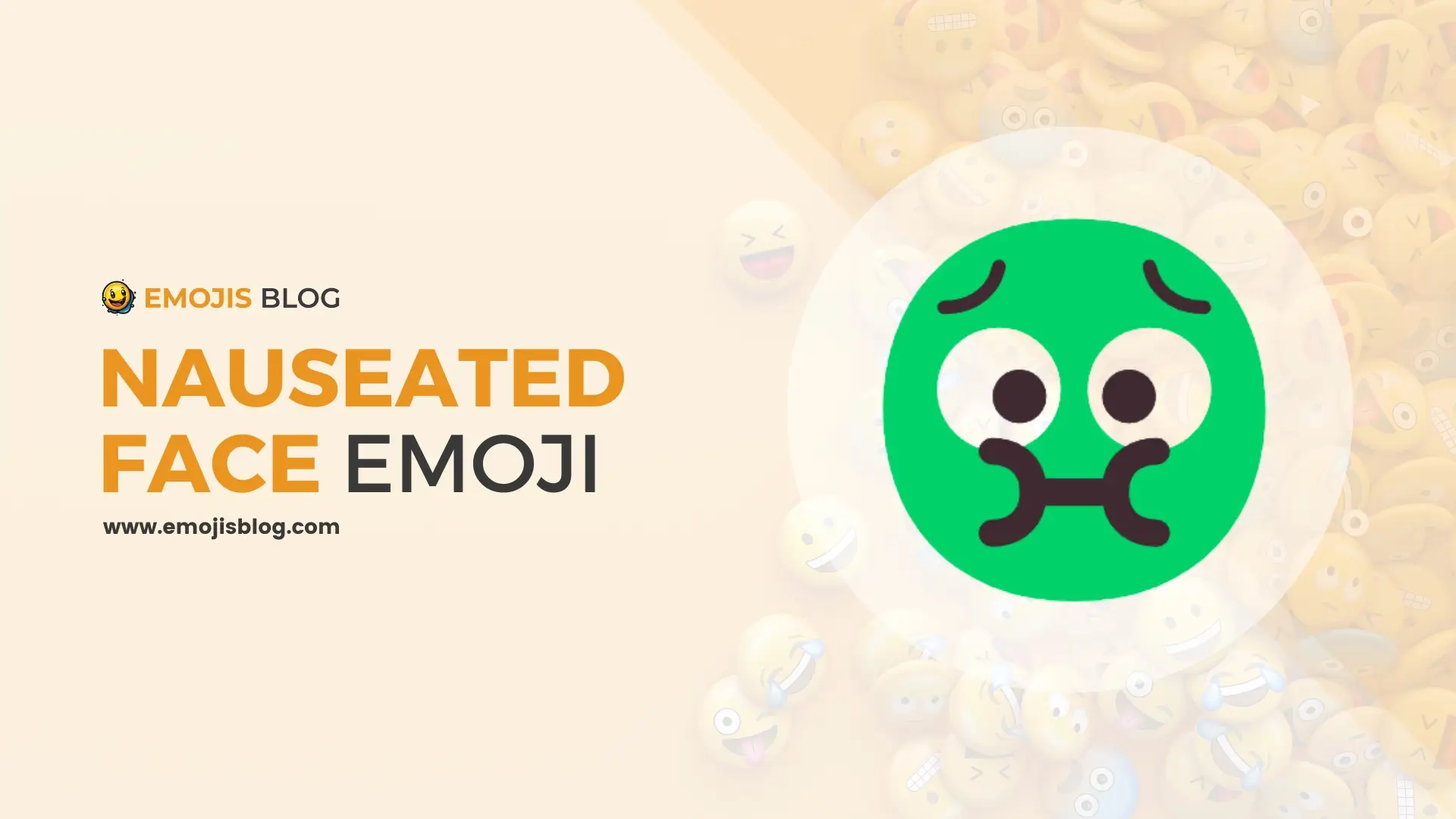What Does The Nauseated Face Emoji Mean 🤢
🤢
The Meaning Of Nauseated Face Emoji 🤢
The 🤢 emoji, commonly known as the nauseated face emoji, visually represents a feeling of sickness or extreme disgust. Its appearance, featuring a pale green face with a distressed expression, often including a closed eye and open mouth, as if on the verge of vomiting, universally communicates physical illness, such as nausea or an upset stomach, or a strong sense of aversion towards a particular situation, taste, smell, or idea. Its versatility allows it to be used in various contexts, ranging from expressing genuine health complaints to conveying metaphorical disgust or disapproval, making it a multifaceted tool in digital communication for conveying a wide array of negative reactions.
Technical Information
| Attribute | Detail |
|---|---|
| Emoji | 🤢 |
| Name | Nauseated Face |
| Unicode Version | Unicode 9.0 (2016) |
| Category | Smileys & Emotion |
| Subcategory | Face Unwell |
| Codepoint | U+1F922 |
| Shortcode | :nauseated_face: (in some platforms) |
| Keywords | Nauseated, Face, Vomit, Sick, Disgust |
| Description | Represents feeling sick or disgusted. Often used to express physical illness or extreme aversion to something. |
| Skin Tones | None |
| Variants | None |
| Related Emojis | 🤮 (Face Vomiting), 😷 (Face with Medical Mask), 😖 (Confounded Face) |
Understanding the Nauseated Face Emoji: 🤢
The digital age has brought about a revolution in communication, with emojis emerging as a powerful tool to convey emotions, reactions, and expressions in a succinct, visually appealing manner. Among the myriad of emojis available at our fingertips, the nauseated face emoji, represented by a green, sickly face often with a closed eye and an open mouth, stands out as a unique expression of discomfort. This article delves into the meaning, usage, and cultural significance of the 🤢 emoji, offering a comprehensive understanding of its place in digital communication.
The Symbolism and Usage of 🤢
At its core, the nauseated face emoji symbolizes a state of sickness or disgust. It visually captures the essence of feeling physically ill, such as experiencing nausea, vomiting, or a general sense of unwellness. However, its application extends beyond the literal interpretation of physical sickness to encompass a broader range of aversive reactions.
Physical Illness: In its most direct usage, the emoji is employed to convey personal health issues, especially those related to stomach discomfort. Text conversations often use it to inform others of one’s inability to participate in activities due to feeling unwell.
Expression of Disgust: Beyond physical illness, the 🤢 emoji is widely used to express strong disapproval or disgust towards a topic, situation, or even taste and smell. It serves as a visual shorthand for saying, “This makes me feel sick,” or, “I find this utterly repulsive.”
Humor and Exaggeration: In a lighter context, the emoji can be utilized humorously to exaggerate reactions to mildly unpleasant or distasteful situations. It adds a layer of comedic effect to conversations, softening the expression of dislike or discomfort.
Cultural Significance and Variability
The interpretation of the 🤢 emoji, like many other digital symbols, can vary across different cultures and communities. While its primary meanings of physical sickness and disgust are universally recognized, the intensity and contexts of its usage can differ. In some cultures, the emoji is used more liberally to express minor displeasure, while in others, it may be reserved for extreme cases of disgust or sickness.
Conclusion
The nauseated face emoji 🤢 serves as a testament to the rich, nuanced language that emojis have become in digital communication. It allows users to express a range of negative physical and emotional states, from literal sickness to metaphorical disgust, enriching the digital lexicon with its versatile applications. As we continue to embrace emojis as a form of expression, understanding the subtleties behind these digital icons becomes crucial in navigating the complexities of online communication. The 🤢 emoji, with its broad applicability and cultural variability, exemplifies the depth and diversity of meaning that emojis can convey, highlighting their role as a dynamic and expressive tool in the digital age.

